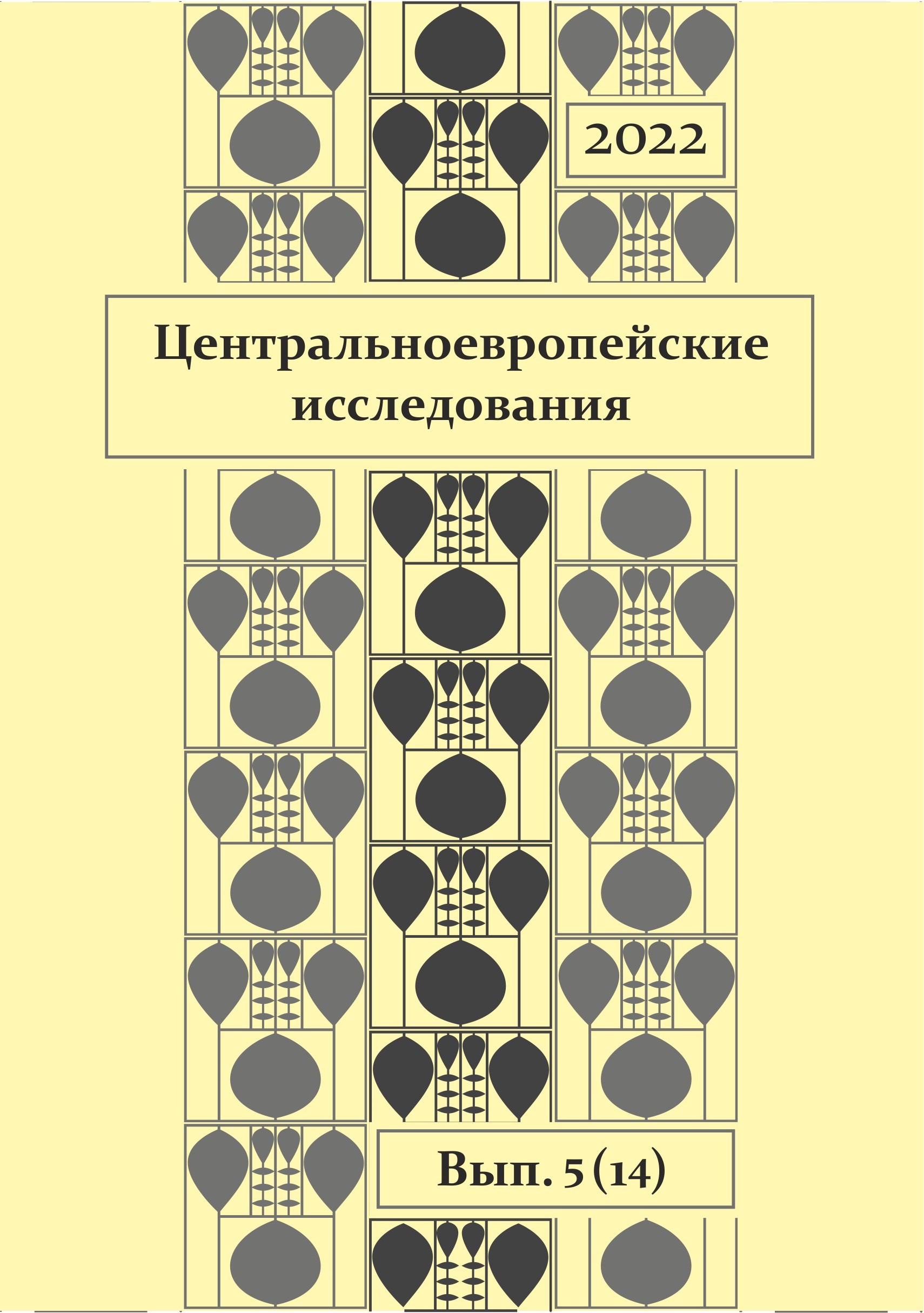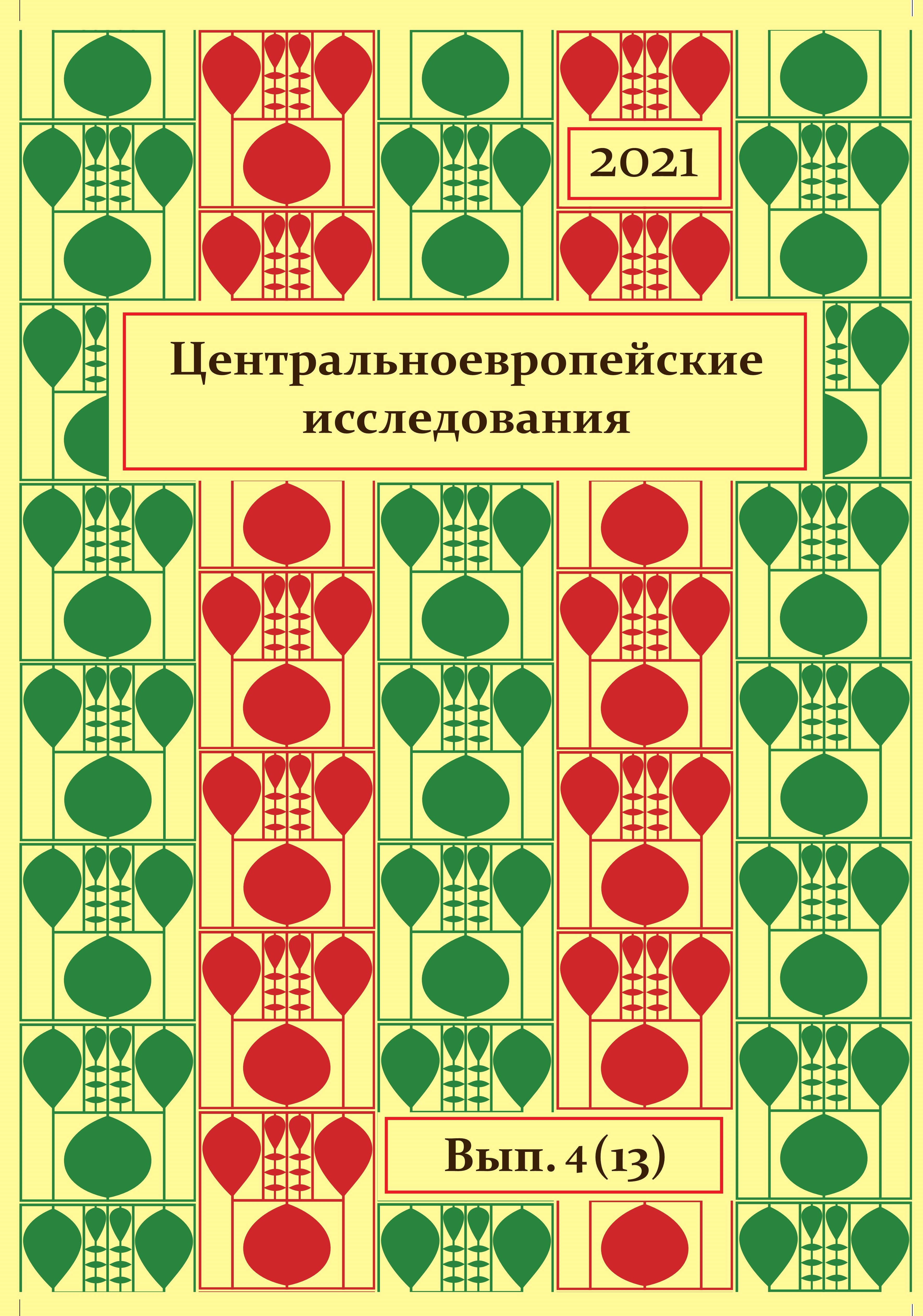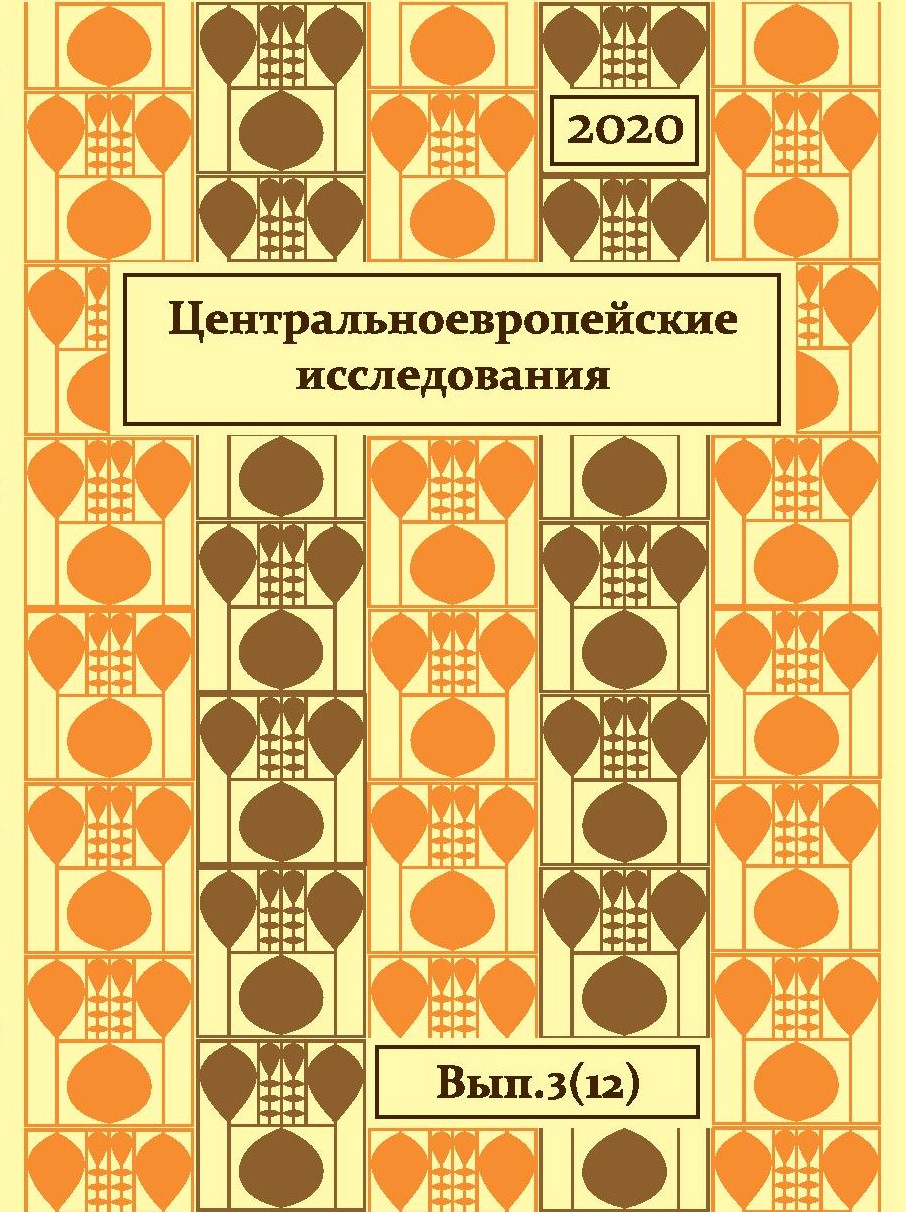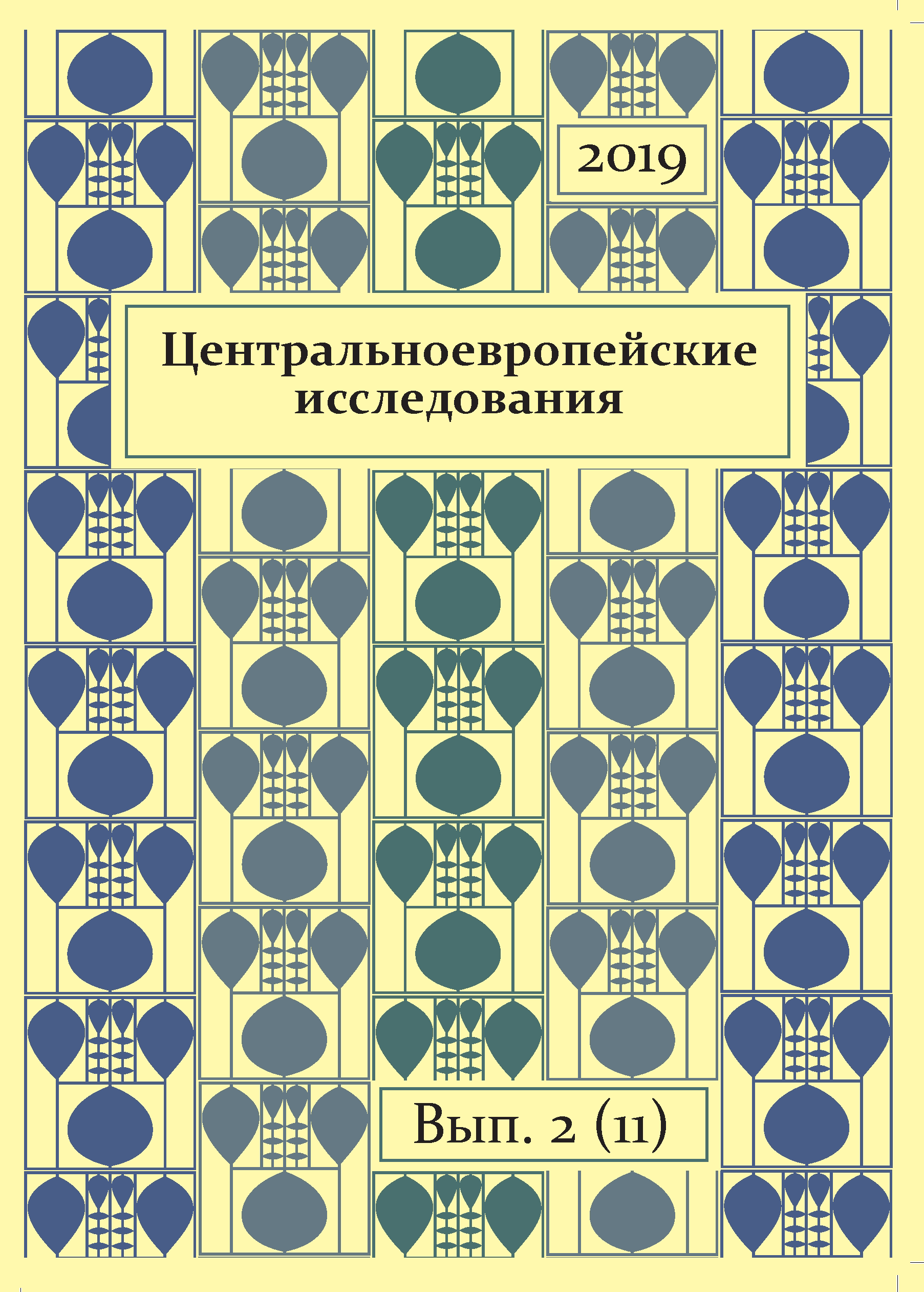Archives
-

Central-European Studies. 2024. 7
Vol. 16 No. 7 (2024)Issue 7 is based on the proceedings of the conference “Freedom for all time: Enduring values in a world of restrictions and prohibitions in Central Europe and neighbouring regions from the eighteenth to the twentieth Centuries” (2023). In traditional and new thematic sections, the political, economic, cultural and linguistic implication of freedom is examined from Germany to the Kingdom of Poland and from socialist Czechoslovakia to contemporary Greece. The subjects include the demands for broader freedom for teachers in Austria-Hungary and the radical forms of the Slovenian national struggle for freedom in the early twentieth century, the state order and the artistic credo of Alfons Muha, the ethics and pragmatics of freedom in the work of Olga Tokarczuk, the memory battles of Austrian and Hungarian historians in the newly formed Burgenland and the rejection of freedom of speech in Austria on the eve of the Anschluss. Interwar European history is represented by analyses of the failed attempts to restore the Habsburgs’ power in Hungary, the work of Soviet diplomacy in Czechoslovakia and Germany, and the polemics surrounding the national question in the Kingdom of Serbs, Croats and Slovenes. The issue is rounded off by reviews of books on the socio-political history of the region in the twentieth century.
-

Central-European Studies
Vol. 2023 No. 6 (2023)Issue 6 consists of articles based on presentations held at the conference “Women at the Heart of Europe” (2022) and the round table “Children of Different Nations” (2022). The authors address the role of women, whether as individuals, groups or social strata, in the history of Central Europe, focusing on the biographies of scientists, writers, women activists, activists and ordinary members of social organisations. Feminatives in Slavic languages and women’s images in fiction were the subjects of separate studies. Biographies of historical figures and writers are the focus of study in a special section on combinations and the coexistence of multiple national identities. New sections of the yearbook also introduce the reader to the symbolic side of modern diplomatic protocol, a systematic description of the scholar's creative heritage, and a review of a book by an international team of authors on the historical memory of the First World War.
-

Central-European Studies
Vol. 2022 No. 5(14) (2022)Issue 5(14) is structured around the proceedings of two conferences held in 2021: “The Blue Danube” and “Public Policy and Images of Power”. The Danube is presented in articles by authors from Austria, Hungary, and Serbia as part of a natural irrigation system, a transport artery, a military frontier, a myth, and a symbol. The image of power, the perception of state institutions, and the nature of political associations and national leaders is exemplified in the material on the Austro-Hungarian Monarchy, the Kingdom of Serbs, Croats and Slovenes, and socialist Czechoslovakia. The new rubric of the yearbook introduces the reader to the context of studying the public space of the monarchic courts and aristocratic salons of the modern era. The traditional rubric, “Forms of Social Organisation”, continues with articles on the women's movement in Serbia at the turn of the nineteenth and twentieth centuries and the social role of the periodical press in the Kingdom of Hungary in the dualist era.
-

Central-European Studies
Vol. 2021 No. 4(13) (2021)Issue 4(13) mainly includes articles examining Hungary as a factor in state, ethnic, and cultural interactions in Central Europe and neighbouring regions in modern and contemporary history. This millennium-old country, which over the centuries has changed the contours of its borders more than once, has played an important role both in dynastic alliances and international relations, and in the formation of national identity not only among the titular nation, but also among the non-Magyar peoples of the kingdom. The feeling of being a small nation in a linguistically-alien environment combined with the ideology of being the bearer of political culture found expression in social structure, culture, mentality, and traditions, which retained their strength and appeal regardless of changes in the political system, of which the twentieth century had many. The Hungarian theme emerges in the context of symbolic communication between Hungarian kings and their estates in the eighteenth century, the ecclesiastical and civil self-organization of the Serbs of the Kingdom of Hungary, reactions to the Compromise of 1867 on the rearrangement of the Austrian Empire, the historiography of the Romantic era and academic interactions in the twentieth century, and finally the sociocultural function of such a Hungary-associated genre as operetta.
-

Central-European Studies
Vol. 2020 No. 3(12) (2021)Issue 3(12) includes articles dealing with the forms of collective self-organisation in Central Europe and neighbouring regions in modern and contemporary history. Of particular interest are instances where the combination of several group identities and community-affiliations united representatives of differing ethnicities or denominations, or supporters of certain political programs and aesthetic principles. Each example permits discussion of the degree of social determinism in the exercise of personal choice and the resistance to attempts to direct, regulate, and limit such choice. The issue examines the period from the middle of the sixteenth century to the 1980s, and geographically stretches from the Dubrovnik Republic and Trieste to the Land of the Don Army and revolutionary Petrograd. The articles examine the responses of societies to the challenges of regional and world wars; the activities of parties and social organisations (from national to artistic) in the context of individuals and social groups implementing political programs and cultural initiatives; the school as an institution for educating the nation; and the people who shaped the faces of associations and unions.
-

Central-European Studies
Vol. 2019 No. 2(11) (2020)Issue 2(11) includes articles on the phenomenon of polyglossia. The possession of several languages, albeit to varying degrees of perfection, has traditionally been one of the attributes of empires and multinational states, although even monoethnic state-formations are home to groups of other ethnicities who retain their own spoken, written, and/or literary languages. The articles cover the period from the mid-seventeenth century to the present day; they examine polyglossia as a communicative function in the everyday practices of peoples living from the Carpathian-Danuban basin to the Adriatic Sea, and from the foothills of the Alps to Russia. Particular attention is paid to the use of languages in the public sphere and education in modern and contemporary history; to metalinguistic reflections in fiction, memoirs, and materials from ethnolinguistic expeditions; and to languages as markers of ethnic and social identity in postmodern literature and art.
-

Central-European Studies
Vol. 2018 No. 1(10) (2019)Issue 1(10) includes the proceedings of the conference “A Day in the Calendar: Holidays and Commemorations as an instrument of national consolidation in Central, Eastern and South-Eastern Europe from the nineteenth to the twenty-first centuries”. The authors focus on the “invention of tradition”, the production, dissemination, and borrowing of practices of commemoration developed around major historical events, such as wars and revolutions, or holidays from the folk or church calendar; old and new holidays in the context of political change; and finally, holidays as markers of identity for peoples who lived in foreign ethnic and foreign language environments. The inclusion of articles on similar processes in neighbouring regions underlines the regularity and uniqueness of the historical development of Central Europe.


